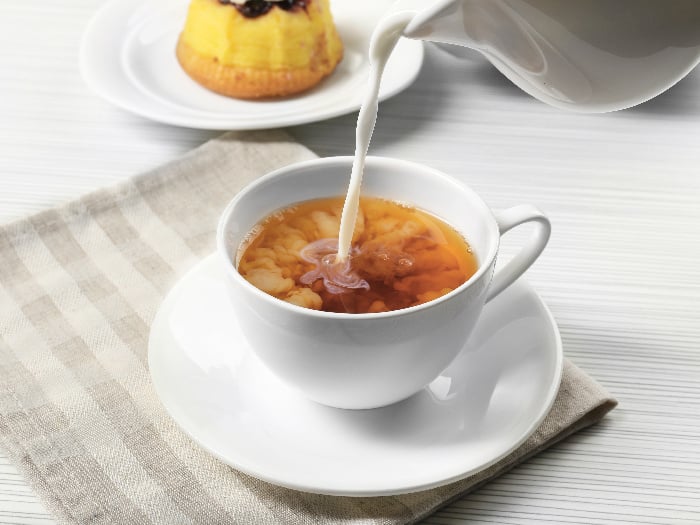There’s a famous saying that goes as follows, “Being Irish, if tea cannot fix it, it’s a serious problem.” The Irish are known for their love for tea. It is customary in Ireland to drink tea anytime during the day, leave alone in the mornings. Additionally, it is considered as a cure for almost anything under the sun- from a bad mood to flu. The Irish breakfast tea is perhaps their most conventional drink and is a blend of several black teas. Let us find out more.
What is the Irish Breakfast Tea?
Irish tea typically has a boozy, robust flavor and a reddish color. It has a strong Assam tea component. Owing to its strength, the Irish breakfast tea is usually served with milk. Some people also like to have the tea black with sugar or honey, as per their preference. The most popular brands of Irish breakfast tea include Bewley’s, Barry’s, Lyon’s, and Twining’s Irish breakfast teas. It has a potent flavor and a higher caffeine content compared to white, green or oolong tea. But how strong is it compared to the English and Scottish breakfast teas or one may say, the other European teas? Let us look into it.

Owing to its strength, some people like to add milk to Irish Breakfast Tea. Photo Credit: Shutterstock
Irish Breakfast Tea vs English Tea vs Scottish Tea
If Irish tea is a blend of black teas like Assam tea, Scottish breakfast teas are an invigorating combination of leaves originating from modern-day Sri Lanka, Africa, and Darjeeling. English tea, on the other hand, is made of a superior blend of high-quality Chinese, Indian, Kenyan, and Ceylon tea leaves. According to a paper published in the Czech Journal of Food Sciences, an average cup (237 ml) of black tea contains 47 mg of caffeine but can contain as much as 90 mg as well. A cup of green tea of the same quantity contains somewhere between 20-45 mg of caffeine. Scottish breakfast tea is considered to be the strongest and the boldest flavored tea out of the three. [1]
How to Make Irish Breakfast Tea?
It is fairly simple to make Irish breakfast tea. To make the beverage, all you need is 200 milliliters of water, 8 grams of Irish breakfast tea leaves, 200 milliliters of milk and 2 tablespoons of sugar. If you prefer, you can also add a pinch of Himalayan pink salt. This entire recipe should ideally not take you more than 20 minutes. Let us take a look at the easy recipe below.
- Step 1: Heat water in a saucepan and add Irish breakfast tea leaves to it.
- Step 2: Turn the stove off and allow the tea leaves to steep for 4-5 minutes. Now strain the tea.
- Step 3: In a separate saucepan, heat the milk along with the sugar and salt.
- Step 4: If you want your tea to be frothy or bubbly, blend the milk and tea concoction (once it relatively cools down) for about 20 seconds.
As an option, you can add whipped cream and cinnamon powder as a garnish. Note that you can also replace the regular milk with almond, toned or soy milk if you’re vegan.
What can you serve along with Irish breakfast tea?
One thing Ireland is truly known for is their wholesome and hearty breakfasts. Needless to say, the Irish breakfast tea is an important component of this meal. The meal consists of local produce and homemade food items. Typically, Irish tea goes really well with Irish tea cakes, sausages, bacon, baked beans, eggs, scones, toast, butter, marmalade, potatoes made into a hash and oatcakes.
